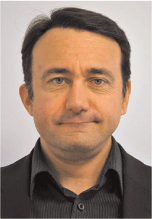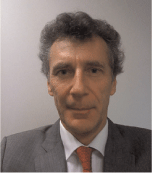Innovative subsea configurations for the development of long gas-condensate subsea tie-backs
Stephane Anres A and Eric Hansen ASaipem.
The APPEA Journal 53(2) 458-458 https://doi.org/10.1071/AJ12069
Published: 2013
Abstract
Several subsea tie-backs to the shore of gas-condensate fields operate today (Ormen Lange, Snohvit), but they are associated to large reserves and suffer from several weaknesses: the sensitivity to liquid accumulation in the lines, which can lead to an early shutdown of production, in particular in case of water breakthrough; and, the disadvantage of continuous injection of hydrate inhibitors, generally MEG, supplied from shore by a dedicated line.
Saipem has recently performed several studies to evaluate the technical feasibility of cases with moderate to large reserves (1-10 Tcf), longer step-outs, and deeper waters, while optimising the recovery factor.
There have been investigations of new subsea configurations combined with new operating philosophies, such as: conventional dual production lines, single lines, and subsea gas/liquid separation, possibly combined with subsea wet or dry gas compression. The work performed clearly shows, in some cases, the potential benefit of the subsea gas/liquid separation in reducing the liquid accumulation, leading to an increase of the recovery factor.
This extended abstract presents the various solutions with their advantages, limitations, and drawbacks. The first part is dedicated to production considerations, such as the management of the liquid hold-up for low flowrates (end-of-life), turndown conditions, pigging, restart, and impact on the receiving terminal (slug catcher). The interest of using low-dosage hydrate inhibitors is also discussed.
The second part focuses on pipeline design from the deepwater field to the shore, as well as on the installation constraints corresponding to the capabilities of the present installation vessels.

Stephane Anres has 22 years of experience in the oil and gas industry, mainly in R&D activities. He now coordinates the development projects in subsea processing within the Saipem Offshore Technology Development Department, as well as being project manager of the Subsea water treatment. He is also deeply involved in subsea field-architecture studies. He received his engineering degree from the Marseilles Engineering School, France, and a master’s degree from Carnegie Mellon University, Pittsburgh, USA. |

Eric Hansen graduated from Ecole Centrale de Nantes, France, with a degree in mechanical engineering and graduated from the French Institute of Petroleum (IFP) with a degree in petroleum economics. He has more than 30 years of experience in the oil and gas industry. He started his career as field engineer and R&D manager for pipeline services companies, mainly in the Middle East, before he joined Coflexip (Technip) as project manager in 1989. Since 1992, he has worked with ETPM as project manager in the North Sea before moving to sales and marketing, in charge of Nigeria and, later, the whole of Africa. In 2000, when ETPM was integrated within Stolt Offshore (renamed Acergy and then merged with Subsea7), He was promoted to commercial director (at Stolt Offshore) of Africa, the Mediterranean Sea, and the Caspian Region with overall responsibility for marketing, tendering, and sales. He joined SAIPEM in 2006 as business development manager for the south Atlantic Region, based in France, with a special focus on deepwater projects and subsea processing developments. Between 2010 and 2011, he was commercial manager with Saipem America in Houston and is now commercial vice president of the engineering and construction BU for southeast Asia and China, based in Singapore. |


